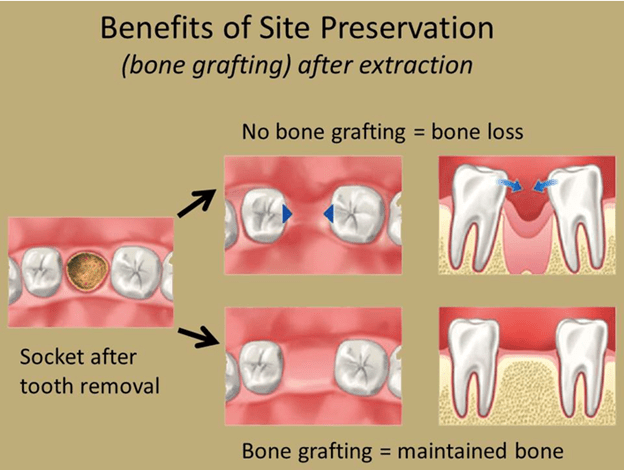Tooth loss is associated with resorption of the supporting bone. Bone reduces both in height and width. At our center in Delhi, we recommend bone grafting and Socket preservation therapy after every extraction to save every millimeter of bone.
In the first three years following extraction, bone resorption causes a 40-60% decrease in its width. This becomes critical particularly for anterior implants where ideal esthetics, phonetics and function is desired. Following tooth extraction in the upper jaw, the maxillary sinus floor expands, further decreasing the available bone to place implants in the posterior maxilla. The Inferior Alveolar Nerve courses through the lower jaw and may limit the length of implant that can be placed. This often leaves a condition in which there is poor quality and quantity of bone suitable for placement of dental implants

BONE GRAFTING
It involves placement of bone substitutes in bone deficient areas to grow bone where needed. A person’s own bone, or human bone derived from cadavers or from corals or bovine bone are most common sources of bone grafts. This not only gives us the opportunity to place implants of proper length and width, it also gives us a chance to restore functionality and esthetic appearance. If the bone is too thin or too short it must be augmented so an implant can be placed in the precise position of the tooth.
SOCKET PRESERVATION THERAPY
Bone Grafting is also used in socket preservation procedure when it is placed following extraction of a tooth to prevent bone resorption following tooth extraction.
